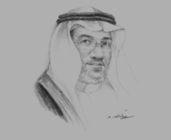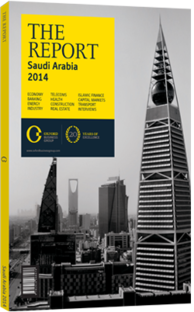Osama Al Bar, Mayor of Makkah: Interview

Interview: Osama Al Bar
How do you assess the progress of current infrastructure updates in Makkah?
OSAMA AL BAR: As a result of the expansion of the Holy Mosque, new infrastructure is being built across the city, including a new sewage network, storm-water network, new roads and several new bridges, tunnels and underpasses. In order to create affordable transportation solutions and ease congestion, Holy Makkah Municipality (HMM) has created a fully owned subsidiary named Makkah Mass Metro Rapid Transit Company (MMRT). It has been appointed to supervise the railway network, with plans to have four metro lines, 182 km of track and 88 stations in and around Makkah.
Is the need for affordable housing being addressed through real estate projects in the city, and how do they differ from elsewhere in the Kingdom?
AL BAR: Wahat Makkah Development Company (WMDC) has built 4000 housing units, out of which 2330 were sold at a subsidised price in the range of SR160,000 ($42,656) to SR270,000 ($71,982) each, based on the units' size. HMM has allocated 670,000 sq metres of land for this facility at a nominal cost to subsidise the project. We have entered into partnership with Diyar Al Balad and are incorporating a joint venture named Retaj Al Balad Al Ameen Company. The group has started building a staff-housing compound, which includes 500,000 sq metres of built-up area. The project will be ready by year-end 2015, but start delivering the completed units as early as October 2014. We are inviting bids from the private sector to enter into partnership with us to develop 7000 housing units (5000 apartments and 2000 villas) on 1.66m sq metres of land area and total built-up area of 1.55m sq metres. This project will provide alternative houses to the residents who will be required to vacate their houses from the unplanned settlements being earmarked for urban regeneration. Makkah, being the holiest place for the world’s 1.2bn Muslims, holds a unique place and is not comparable with any other city. Besides a population of 2m people, the city receives around 12m visitors annually from overseas and a similar number from other cities across Saudi Arabia, thus it has its own unique requirements which are quite challenging to cater to.
In what way is the municipality reacting to infrastructure upgrades elsewhere, and what opportunities exist for the private sector in the city?
AL BAR: The extension of the Holy Mosque, development of new hotels and housing units, new infrastructure and upgrades to existing networks, the new railway network connecting Makkah with Jeddah and Medina, the local metro transit system, and the development of King Abdulaziz International Airport are all being synchronised to cater to the demand created by new visitors to Makkah and Medina. HMM created a closed joint-stock company in 2009, named Al Balad Al Ameen Development and Urban Regeneration Company (ABAM), to identify projects in the Holy City and enter into partnership with the private sector.
ABAM has so far created five subsidiaries. The first, Al Bawabah Makkah Company (BMC), has entered into partnership with Sumou to develop mixed-use real estate on 1.5m sq metres. In addition, the MMRT has been assigned to supervise the planning, development, and operation and management of the metro network. Elsewhere, after incorporating the WMDC, ABAM sold 80% of its shares to a private company which has sought to develop the Affordable Housing Project.
Another project, led by Retaj Al Balad Al Ameen Company, involves the development of staff housing for the manpower of new hotels and firms currently being built. Diyafah Al Balad Al Ameen, on the other hand, is partnering with other hospitality groups to provide catering for the city's visitors, as well as print city maps and issue health certificates for employees. Finally, ABAM and the Jorhum Company for Urban Development will partner with the private sector to develop unplanned settlements. Sharashif, with a total area of 1.7m sq metres will be the group’s first mega-project.
You have reached the limit of premium articles you can view for free.
Choose from the options below to purchase print or digital editions of our Reports. You can also purchase a website subscription giving you unlimited access to all of our Reports online for 12 months.
If you have already purchased this Report or have a website subscription, please login to continue.

